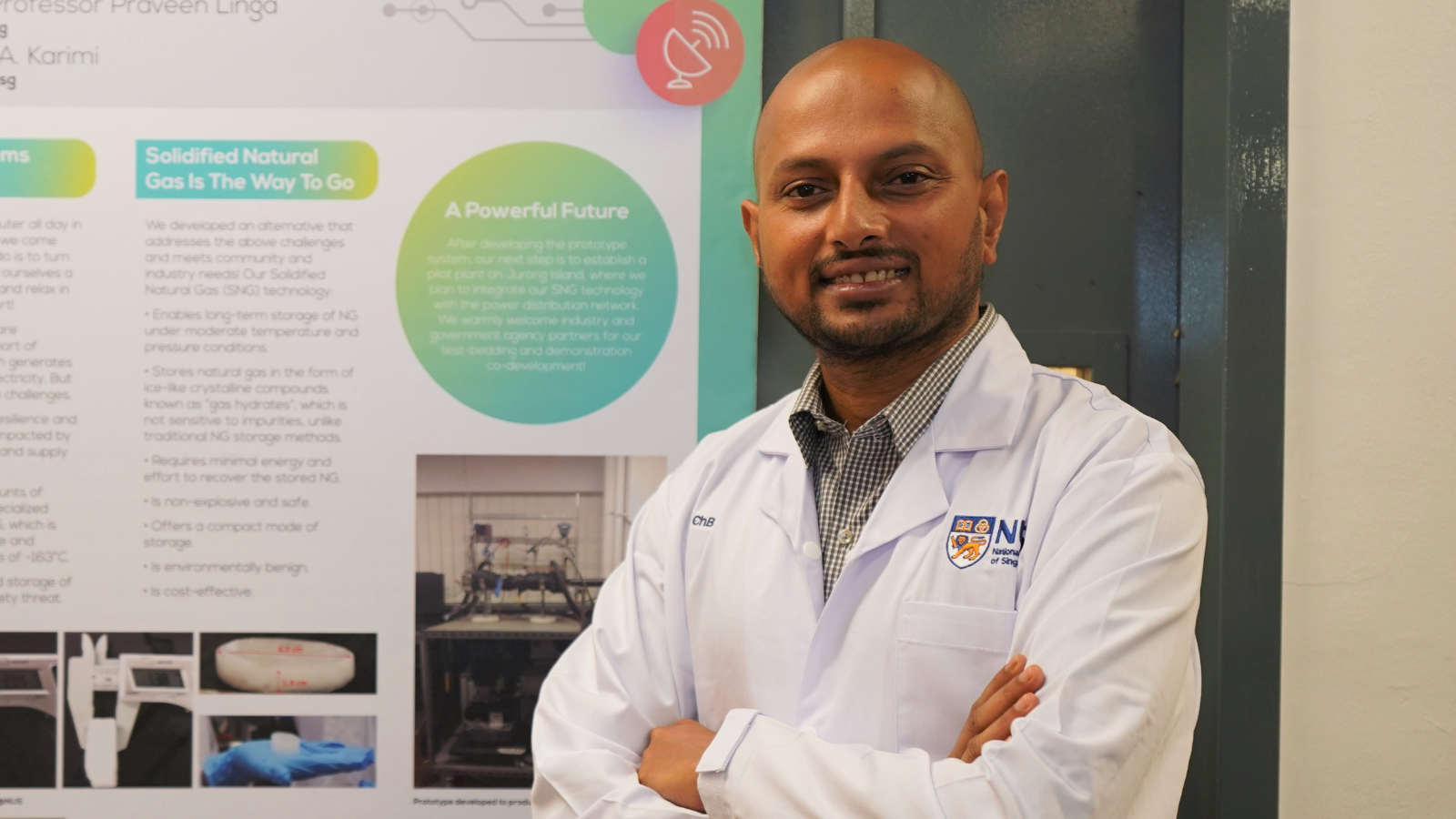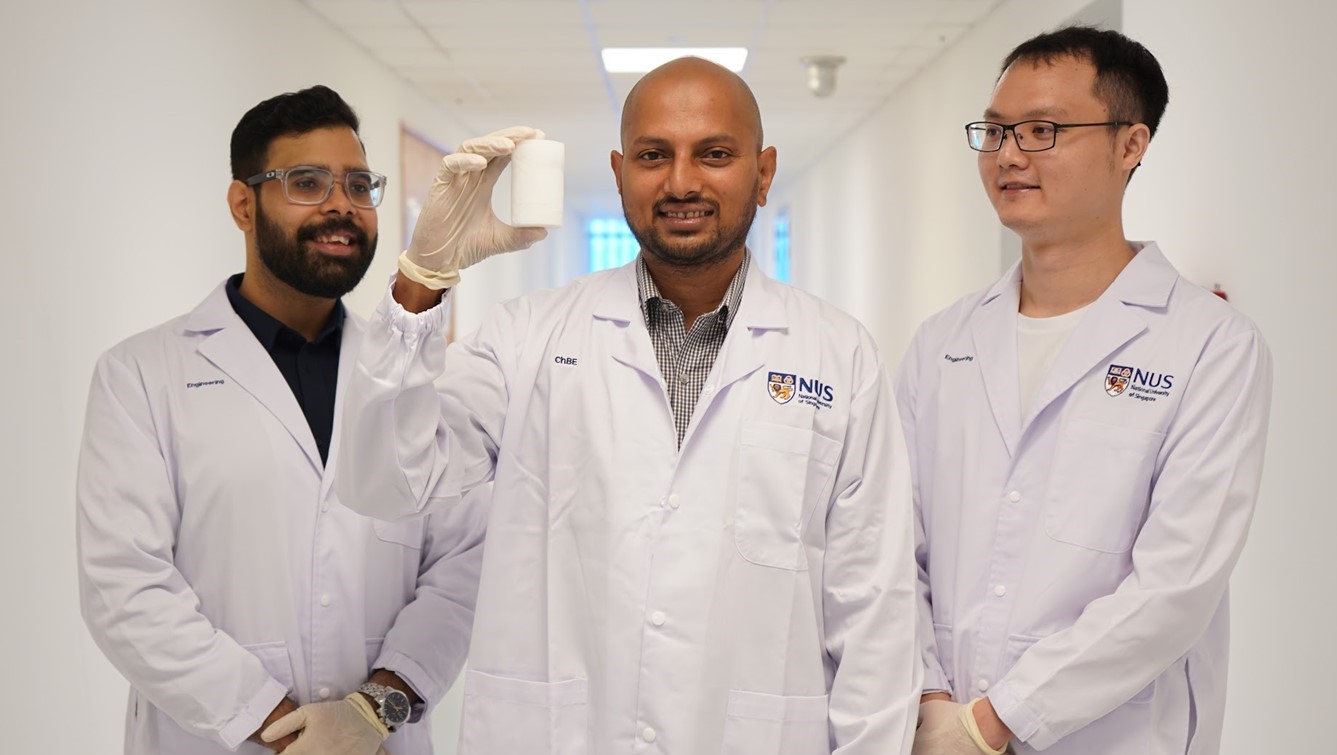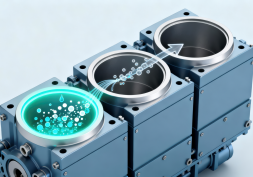Follow CDE on Socials

Dr Praveen Linga
Professor
Department of Chemical and Biomolecular Engineering
Solid Natural Gas: An Avenue to a Safer, Cleaner and Brighter Future
Follow CDE on Socials
Natural gas remains a pivotal energy source as societies transition from fossil fuels to cleaner, renewable energy sources. However, key hurdles to the wider adoption of natural gas remain, prompting the need for more viable solutions.
Natural gas is a clean, odourless and non-toxic energy source that provides warmth for cooking and heating, and fuels power stations that provide electricity to homes and businesses. Natural gas also fuels many industrial processes that produce materials and goods, ranging from glass to clothing, and it is an important ingredient in products such as paints and plastics. Above all, natural gas is abundant; according to the International Energy Agency, if consumption of natural gas remained at present levels, there would be enough recoverable resources to last more than two centuries.
Nonetheless, like everything, natural gas also has its drawbacks—the challenges in transporting and storing it. Current methods require the chilling of natural gases to exceedingly low temperatures (-162 °C) to form liquefied natural gas (LNG). While LNG is the widely used mode of transport of natural gas where pipeline transport is not feasible, it is not suitable for long-term storage. The need for such low temperature to store natural gas in its liquefied form means that there is continuous boil-off associated with the technology; LNG vapours are highly flammable and may rapidly combine with air to form explosive mixtures.
The need for solid, robust alternatives
Researchers worldwide are actively investigating safer alternatives for the storage of natural gas—solidified natural gas (SNG), or natural gas hydrates, may just be the answer.
In these hydrates, gases such as methane are trapped inside cages formed by water molecules. Additives and defined pressure-temperature conditions yield a stable, solid material that is suitable for long-term storage and can be transported without the dangers inherent to pressurised flammable liquids.
These gas hydrates, however, are currently limited to the small scale of bench-top laboratory experiments. To that end, Professor Praveen Linga from the Department of Chemical and Biomolecular Engineering at the College of Design and Engineering, National University of Singapore, is working on advancing SNG technology for industrial viability.
“We need to identify strategies that would increase methane storage capacity, speed up the process of converting the natural gas into solid form, and alleviate the conditions required to ensure long-term stability,” says Prof Linga. “One missing piece of the puzzle for natural gas to become a solidified wonder material suited for scale-up is promoters—chemicals that reduce the amount of energy required for gas to be captured, and thereafter, stored as hydrates.”
Prof Linga, an expert in the field with more than 150 published research articles and 100 invited talks and seminars, aims to use gas hydrates to meet the critical needs of clean and safe energy. “SNG technology carves a niche for safe and long-term storage of natural gases under moderate temperature and pressure conditions,” explains Prof Linga whom, together with his team members Dr Ye Zhang, Dr Gaurav Bhattacharjee and Mr Huanzhi Xu, and collaborators from the Dalian University of Technology and the Indian Institute of Technology Madras, recently presented a breakthrough discovery on methane hydrate storage in the journal Energy & Environmental Science.

No perfect natural gas, just perfect combinations
Prof Linga is mindful of the need to develop technology that can not only be adopted by industry but is also environmentally friendly—the avoidance of the use of toxic promoters traditionally employed in SNG technology. For example, the promoter tetrahydrofuran (THF), is generally considered to be volatile, corrosive and even cancer-causing. This has led Prof Linga and his team to explore cleaner alternatives.
“We uncovered a promising candidate—dioxane,” reveals Prof Linga. “Using dioxane in combination with another non-toxic amino acid promoter, we were able to rapidly form a mixed methane hydrate made of methane and dioxane at room temperature.”
In the novel gas hydrate, the average methane storage capacity achieved was 135.13 v/v—far exceeding the established limit of 115 v/v for this type of methane hydrate. “This holds promise for a more energy-dense SNG product with greater commercialization potential,” adds Prof Linga.
Taking SNG to the next level—and the world
The Energy Market Authority (EMA), a statutory board under Singapore’s Ministry of Trade and Industry, has established research and development in natural gas, solar power, low-carbon alternatives and regional power grids as a key pillar of the country’s energy transition—the gradual shift towards cleaner, reliable and sufficient energy sources. In 2021, natural gas contributed to 94.9% of Singapore’s electricity generation, and a recent report indicating that natural gas will remain a critical component of the country’s energy mix until renewables such as solar and hydrogen can take on more of the load.

Similarly, Prof Linga sees natural gas as an important ‘bridge fuel’ for a sustainable global energy transition and highlights its potential use for long-term, stationary back-up power for Singapore and beyond. Says Prof Linga, “Our work doesn’t stop here. Going forward, we will strive for even higher gas storage capacity in SNG and gather more evidence to support the development of large-scale dioxane-promoted SNG technologies.” He further opines that the advances made in the development of SNG technology can be applied to develop hydrogen gas storage technology based on gas hydrates in the future.
People
Praveen Linga ▏Professor, Department of Chemical and Biomolecular Engineering ▏ LinkedIn Profile
Gaurav Bhattacharjee ▏Research Fellow, Department of Chemical and Biomolecular Engineering ▏ LinkedIn Profile
Ye Zhang ▏Research Fellow, Department of Chemical and Biomolecular Engineering ▏ LinkedIn Profile
Related Departments/ Centres
If you are interested to connect with us, email us at cdenews@nus.edu.sg








